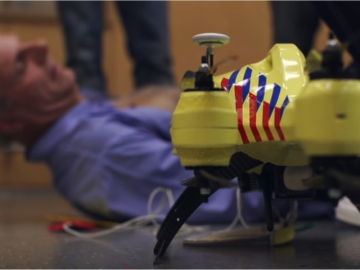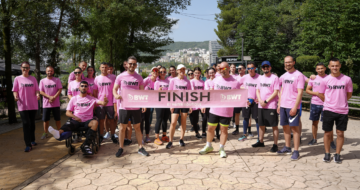How can you anchor innovation in a government organisation?

Local authorities have to keep up with technological and digital developments in public space. By adopting innovative and digital technologies, our cities remain liveable and we make them smarter. But how do we get there, cities of the future?
Local authorities have to keep up with technological and digital developments in public space. By adopting innovative and digital technologies, our cities remain liveable and we make them smarter. But how do we get there, cities of the future?
By sensibly dealing with the opportunities that technology and digitalisation offer us, we can improve the information and communication in our cities so that we are ready for tomorrow. For example: Port of Antwerp uses Digital Twin technology to make a digital copy of the port to run simulations. This will give the port a better insight into the various traffic flows. Or Bonheiden that maps bicycle flows in bicycle registrations with IoT technology and adjusts the mobility policy accordingly.
Framework for innovation
A condition for achieving innovation within a (medium-sized) municipality or city and government organisation is that it becomes a permanent part of your regular business operations. Government organisations must see innovation in the long term and get away from the short-term of legislation periods that is standard in politics. We have been or are currently guiding Vilvoorde, Aalter, the province of Flemish Brabant, Farys, Fluvius and S-LIM in shaping their policy vision and helping them with tangible policy strategies and short-term and long-term action plans.
Our framework consists of a number of steps in which we look for a long-term vision with the main question "who do we want to be?". This will then be given a strategic and tactical interpretation. That framework originated from our experiences with local authorities. It soon became clear that these organisations want to achieve results quickly, while at the same time are seeking a sustainable long-term solution. You must take into account the specific situation of governmental organisations. They work and think in terms of legislatures. The ecosystem of a governmental organisation is also quite unique and consists of citizens, companies, service providers, knowledge institutions and peripheral municipalities.

Step 1: Current situation and future
During the first contact moments and workshops with all relevant actors within the local government, we will look for the current situation (environmental analysis and policy objectives). During this first step, we already provide an overview of technologies and trends that could support future policy and indicate the opportunities and threats that current policy has.
Step 2: Policy challenges
The elaboration of the first steps in the framework (current and future situation) gives the opportunity to further investigate what the future needs of all stakeholders are and what identity the local government wants to radiate in the future. The correct reflection of the situation" AS-IS "and" TO-BE "gives us an overview of the policy challenges grouped per policy area that the organisation can expect today, tomorrow and the day after tomorrow. It is important to consider that each policy area is described according to the Wheel of Cohen, namely society, quality of life, environment, governance, economy and mobility, is discussed.

Step 3: Orientation and prioritization
After that, we determine for each policy challenge which innovative solutions are possible. We use a number of predetermined criteria for this, such as added value and efficiency for the municipality, city and residents. Thanks to our experience, connections and independent role in the market, we have a good overview of all available solutions for a Smart City. During the process, we look for the right solution for today and tomorrow. We determine at this stage which projects are important, which projects need a longer timeline and more advocates, and low hanging fruit.
Step 4: Action plan and dare to participate
Innovation is interdisciplinary and covers a variety of themes. It is therefore important to bring the right people to the table together. In consultation with relevant companies and or stakeholders, we will check which innovations are feasible in the short term and we will hold further discussions about this. Question rounds and participation trajectories are possible intermediate steps that can clarify what these innovations can potentially yield for residents and other stakeholders. In this way you show what you are doing and trigger enthusiasts and interested parties to participate and, above all, support increases. And so we achieve our ultimate goal, which is to create support for change to create an innovative environment that is fully supported by the entire organisation and everyone involved.
Latest insights & stories

A Global Movement: The World Unites in a Pink Pledge for Clean and Sustainable Water
5,000 participants. 32 countries. €30,000 funds raised. And that's just the beginning.
Picture this: One step that sends ripples across the globe, transforming lives and creating waves of change. You might wonder, how can such a simple action for most of us have such a profound impact?

Sustainability and circularity in construction
Join us in transforming the future of construction, creating buildings that not only stand the test of time but also contribute to a healthier planet!

RainTunes: Shower scenarios for the soul
Light, hearing, smell, and touch: Together with experts, we have developed sensuous scenarios that turn showering into an individual experience. Whether you want to prepare for the day ahead or relax after working out. Whether you want to refresh after a day’s work or unwind at the end of the evening: RainTunes surprises with multisensory experiences.*
*Currently available only in Germany and Austria.